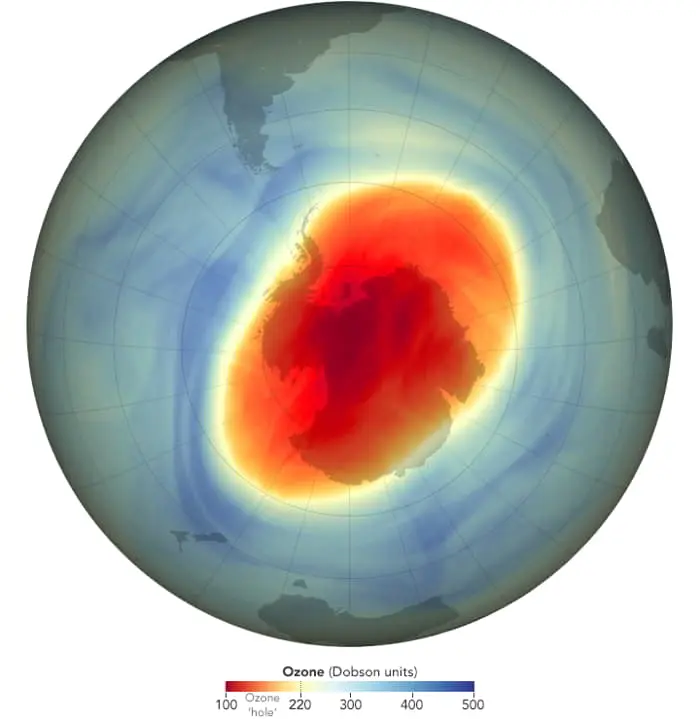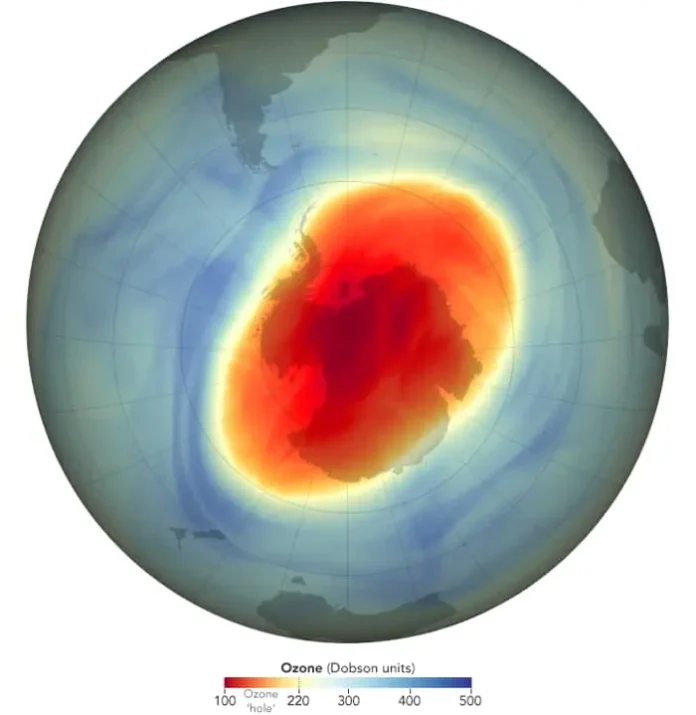The ozone hole over the Antarctic ice continent continued its downward trend, shrinking to its smallest size in recent years compared to its measured width between September 7 and October 13 last year.
The ozone hole on the Antarctic continent was measured at an average of 23.2 million square kilometers between September 7, 2022 and October 13, 2022. Compared to the same period last year, this average value was in line with the shrinking trend in recent years.
The ozone layer is located in the stratosphere, a layer of the Earth’s atmosphere about 15 to 40 kilometers above the Earth’s surface. This layer, which protects humans from the sun’s harmful ultraviolet rays, is examined over the South Pole in September each year and compared with previous years’ values to determine whether the ozone hole is growing or shrinking.
The reason for this time of year is that it is the time of year when temperatures start to rise as the Sun emerges at the South Pole. During this period, the active forms of chlorine and bromine, which have been bound in clouds during the winter, start the reactions that destroy ozone when the Sun comes out. This is the time of year when the ozone hole is at its largest.
The size of the ozone layer is measured by observation satellites orbiting the Earth. While measurements are taken over a specific date range and period, the size of the ozone hole can change from day to day and week to week as the weather changes and other factors come together. But in general, it has been decreasing over the last two decades. The elimination of ozone-depleting substances by the Montreal Protocol is shrinking the hole.
On October 5, 2022, these satellites observed a single-day maximum ozone hole of 26.4 million square kilometers, slightly larger than last year. The image below shows the size and shape of the ozone hole over the South Pole that day.

When calculating the size of the hole in the ozone layer, another important piece of data is the change in the total amount of ozone. Every year, as the Sun comes into view at the pole, measurements are taken with the Dobson Spectrophotometer, an optical device that records the total amount of ozone. Globally, the total average amount of ozone is 300 Dobson Units. On October 3, 2022, researchers recorded 101 Dobson Units over the South Pole, the lowest total ozone value. At that time, ozone was almost completely absent at altitudes between 14 and 21 kilometers, similar to last year.

